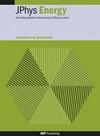先进制造应用于核聚变——挑战与解决方案
IF 6.3
3区 材料科学
Q1 ENERGY & FUELS
引用次数: 1
摘要
实现设计性能所需的材料将需要能够提供金属、陶瓷和金属陶瓷化学简编的配方和加工方法,这些化学简编必须在源头上进行微调,并能承受下游的热机械调整。研究人员利用计算热力学建模和改进的热机械处理不断开发结构钢和金属陶瓷,目前正在评估基于8%-16%wt.%Cr的氧化物分散强化钢(ODS)-还原活性铁素体-马氏体钢(RAFM)钢。SiCf和CuCrZr作为含有活性冷却剂的金属基质复合材料的组合将被视为一个主要的机会,此外,由SiC纤维组成的复合陶瓷材料增强了能够连接到金属结构的SiC基质,在开发先进的热交换器方面提供了巨大的潜力。继续先进制造业的主题,使用涉及粉末冶金的固态加工技术——热等静压和火花等离子体烧结,生产金属、陶瓷和金属陶瓷中的近净形状产品,是关键的制造研究主题。生产金属和陶瓷部件的增材制造(AM)现在正成为一种可行的制造路线,通过AM和减法加工的结合,有能力生产任何其他工艺都无法制造的高效流体承载结构。将其扩展到使用电子束焊接和先进的热处理来提高均匀性并提供模块化,现在可以使用双管齐下的解决方案来提高性能和完整性,同时为设计师提供更多的自由度。本文章由计算机程序翻译,如有差异,请以英文原文为准。
Advanced manufacturing applied to nuclear fusion—challenges and solutions
Materials needed to achieve designed performance will require formulations and processing methods capable of delivering a compendium of metallic, ceramic and cermet chemistries, which must be finely tuned at source, and tolerant to down-stream thermomechanical adjustment. Structural steels and cermets are continuously being developed by researchers using computational thermodynamics modelling and modified thermomechanical treatments, with oxide dispersion strengthened steel (ODS)-reduced activated ferritic-martensitic steel (RAFM) steels based on 8%–16% wt.% Cr now being assessed. The combination of SiCf and CuCrZr as a metal matrix composite containing an active coolant would be seen as a major opportunity, furthermore, composite ceramic materials consisting of SiC fibres reinforcing a SiC matrix capable of being joined to metallic structures offer great potential in the development of advanced heat exchangers. Continuing the theme of advanced manufacturing, the use of solid-state processing technologies involving powder metallurgy–hot isostatic pressing and spark plasma sintering to produce near-net shaped products in metallics, ceramics and cermets are critical manufacturing research themes. Additive manufacturing (AM) to produce metallic and ceramic components is now becoming a feasible manufacturing route, and through the combination of AM and subtractive machining, capability exists to produce efficient fluid carrying structures that could not be manufactured by any other process. Extending this to using electron beam welding and advanced heat treatments to improve homogeneity and provide modularity, a two-pronged solution is now available to improve capability and integrity, whilst concurrently offering increased degrees of freedom for designers.
求助全文
通过发布文献求助,成功后即可免费获取论文全文。
去求助
来源期刊

Journal of Physics-Energy
Multiple-
CiteScore
10.90
自引率
1.40%
发文量
58
期刊介绍:
The Journal of Physics-Energy is an interdisciplinary and fully open-access publication dedicated to setting the agenda for the identification and dissemination of the most exciting and significant advancements in all realms of energy-related research. Committed to the principles of open science, JPhys Energy is designed to maximize the exchange of knowledge between both established and emerging communities, thereby fostering a collaborative and inclusive environment for the advancement of energy research.
 求助内容:
求助内容: 应助结果提醒方式:
应助结果提醒方式:


